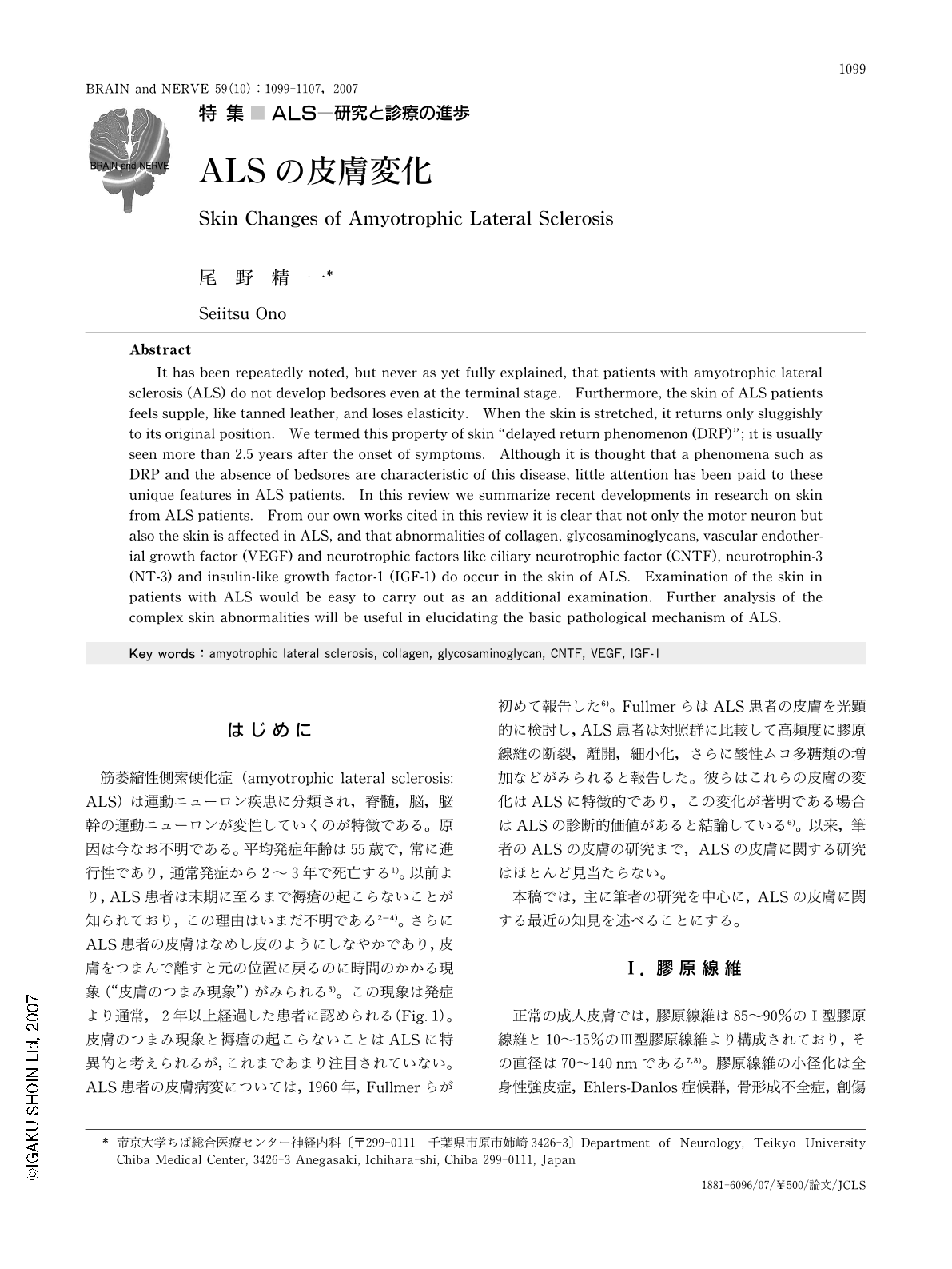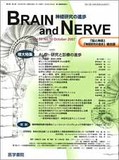Japanese
English
- 有料閲覧
- Abstract 文献概要
- 1ページ目 Look Inside
- 参考文献 Reference
はじめに
筋萎縮性側索硬化症(amyotrophic lateral sclerosis: ALS)は運動ニューロン疾患に分類され,脊髄,脳,脳幹の運動ニューロンが変性していくのが特徴である。原因は今なお不明である。平均発症年齢は55歳で,常に進行性であり,通常発症から2~3年で死亡する1)。以前より,ALS患者は末期に至るまで褥瘡の起こらないことが知られており,この理由はいまだ不明である2-4)。さらにALS患者の皮膚はなめし皮のようにしなやかであり,皮膚をつまんで離すと元の位置に戻るのに時間のかかる現象(“皮膚のつまみ現象”)がみられる5)。この現象は発症より通常,2年以上経過した患者に認められる(Fig.1)。皮膚のつまみ現象と褥瘡の起こらないことはALSに特異的と考えられるが,これまであまり注目されていない。ALS患者の皮膚病変については,1960年,Fullmerらが初めて報告した6)。FullmerらはALS患者の皮膚を光顕的に検討し,ALS患者は対照群に比較して高頻度に膠原線維の断裂,離開,細小化,さらに酸性ムコ多糖類の増加などがみられると報告した。彼らはこれらの皮膚の変化はALSに特徴的であり,この変化が著明である場合はALSの診断的価値があると結論している6)。以来,筆者のALSの皮膚の研究まで,ALSの皮膚に関する研究はほとんど見当たらない。
本稿では,主に筆者の研究を中心に,ALSの皮膚に関する最近の知見を述べることにする。
Abstract
It has been repeatedly noted, but never as yet fully explained, that patients with amyotrophic lateral sclerosis (ALS) do not develop bedsores even at the terminal stage. Furthermore, the skin of ALS patients feels supple, like tanned leather, and loses elasticity. When the skin is stretched, it returns only sluggishly to its original position. We termed this property of skin "delayed return phenomenon (DRP)"; it is usually seen more than 2.5 years after the onset of symptoms. Although it is thought that a phenomena such as DRP and the absence of bedsores are characteristic of this disease, little attention has been paid to these unique features in ALS patients. In this review we summarize recent developments in research on skin from ALS patients. From our own works cited in this review it is clear that not only the motor neuron but also the skin is affected in ALS, and that abnormalities of collagen, glycosaminoglycans, vascular endotherial growth factor (VEGF) and neurotrophic factors like ciliary neurotrophic factor (CNTF), neurotrophin-3 (NT-3) and insulin-like growth factor-1 (IGF-1) do occur in the skin of ALS. Examination of the skin in patients with ALS would be easy to carry out as an additional examination. Further analysis of the complex skin abnormalities will be useful in elucidating the basic pathological mechanism of ALS.

Copyright © 2007, Igaku-Shoin Ltd. All rights reserved.


